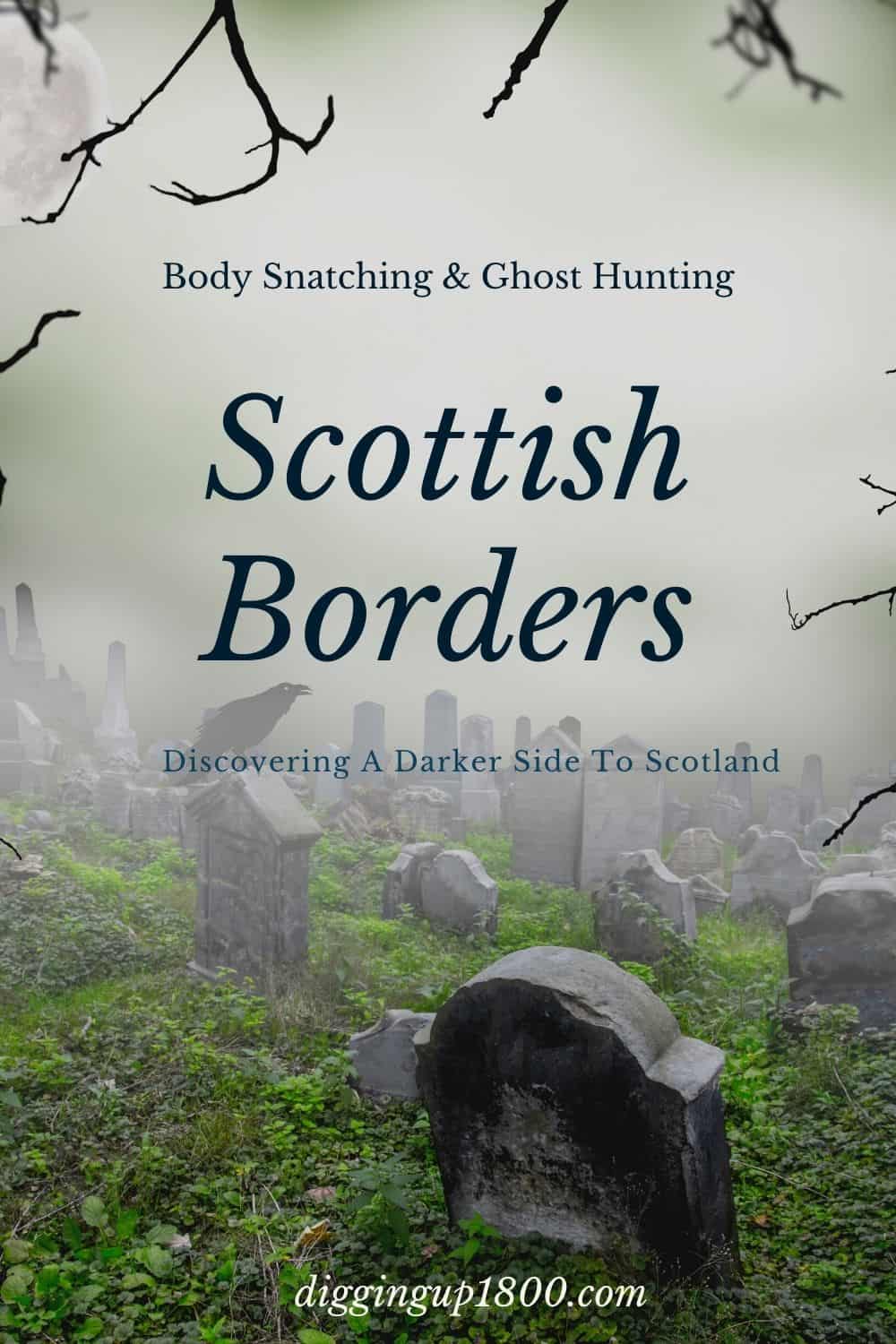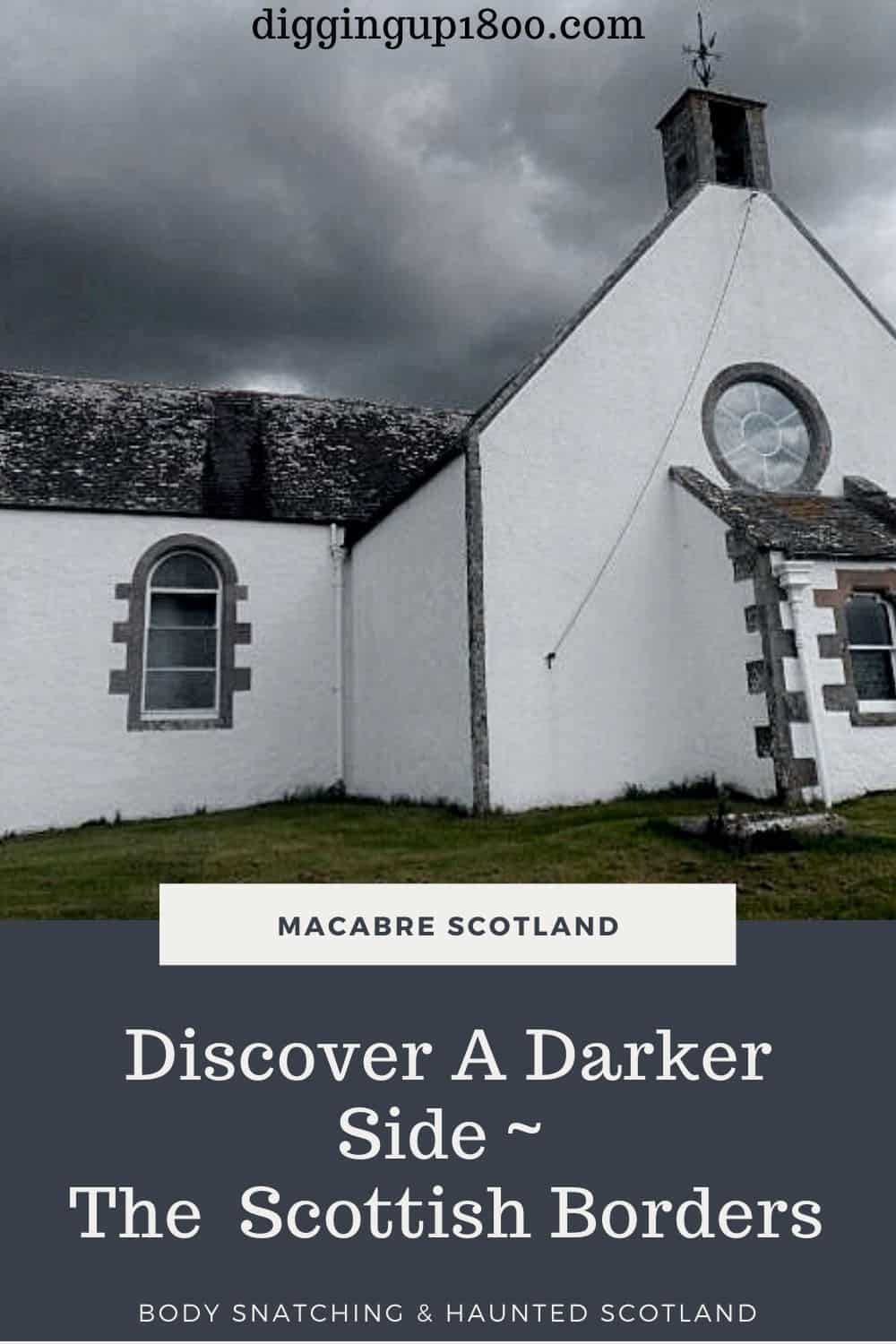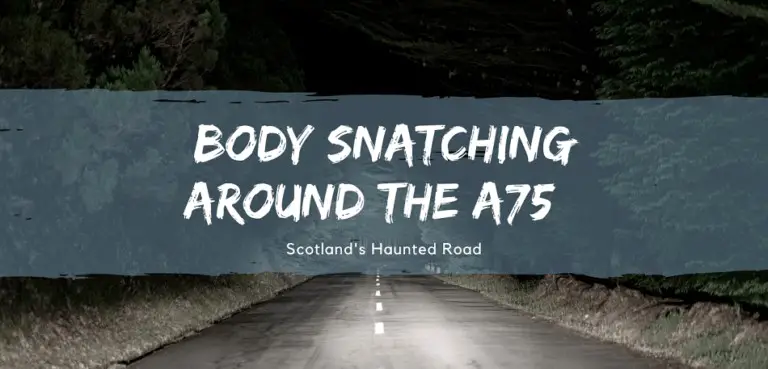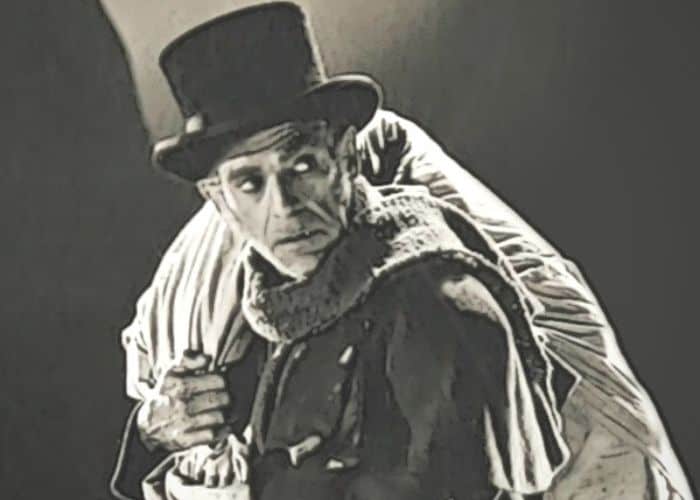Discover A Darker Side To The Scottish Borders
Hidden within some of the smaller parishes of the Scottish Borders, lies a dark secret that not many visitors may know about.
A past that is rarely, if ever mentioned in the guide books, yet one that is in plain sight if you fancy exploring for a wee while.
In this post I want to take you on a road trip to a few of the outlying parishes near the beautiful town of Jedburgh, a town with an Abbey and historical links to Mary Queen of Scots, and one where you’d be forgiven for thinking that body snatching passed by this town completely.
The route I took can be driven either way round, and it is only Eckford that sticks out on a slight limb. It took me about 3 hours in total, although you can take as long as you wish – you never know how long you’ll end up wandering through the gravestones.
Most of the sites have some form of body snatching prevention still in situ.
Jedburgh

At the height of the body snatching era, the population of Jedburgh and the immediate surrounding area was 5251 inhabitants, plenty of supplies to go around.
Although Jedburgh’s connections with body snatching may not be that obvious at first, as a town that was a busy transport hub in the 19th Century, it’s hardly surprising that this macabre trade wasn’t linked to the town in some way.
But the links, unfortunately, and perhaps somewhat surprisingly, are few and far between.
Suspected Link To Body Snatching
There is a suspected link to body snatching in Jedburgh after a woman’s corpse was found near Ancrum, in 1825.
The corpse was discovered because body snatchers were serving time in Jedburgh Jail and had been unable to retrieve the corpse.
A mere 48 miles from Edinburgh, one of the major centres for anatomical study in the 19th century, dark body snatching tales relating to Jedburgh are a little thin on the ground.
There are really only two sites within Jedburgh itself that have links to this macabre trade, one is the Abbey and the other, is Jedburgh Jail & Museum.
Jedburgh Abbey

Although much of the former 12th century Abbey was gutted and the stone reused elsewhere, Jedburgh Abbey is still an impressive place to visit.
Founded in 1138, Jedburgh Abbey, once home to the Black Canons, is now in the hands of Historic Scotland and is one of four principal Border Abbeys of this period, the others being Dryburgh, Melrose and Kelso.
The Great Abbey Church, dedicated to St Mary the Virgin, served until 1875 as the parish church, only being forced to find a new site due to structural deterioration.
Burials within the grounds of the Abbey Church would certainly have been taking place when body snatching was at its height and so it is hardly surprising to discover that there is the possibility of there once being a watchtower here.
Excavations on the site in 1990, a detailed survey of which is available on the Canmore website, revealed a possible link to inhabitants of Jedburgh being fearful of a visit from the resurrection men.
a coffin comprising a lead box surrounded by timber planking. Attached to its exterior were some textile and thin beaten copper, the latter fashioned into shell-like patterns. Inside was a well-preserved, articulated skeleton with some hair still attached to the skull. Although its lid was missing, the coffin’s construction and the skeleton’s state of preservation suggest the burial to be of late 18th or 19th century date
Canmore
This ‘leaden’ coffin or box was found to be immediately above a stone sarcophagus, but unfortunately, it is thought that this earlier coffin and skeleton sustained damage when it was disturbed during the burial of the above.
Jedburgh Castle Jail & Museum

Little did I know when I entered Jedburgh Castle Jail & Museum that firstly I’d have the place nearly to myself for my whole trip and secondly, that I was about to see one of the finest mortsafes that I’ve probably seen to date.
Built in 1823, Jedburgh Castle Jail & Museum itself was built on the site of old Jedburgh Castle. The Jail was designed by the same architect responsible for Calton Jail in Edinburgh, local man Archibald Elliot and is reputed to have been one of the most comfortable jails in Scotland. It closed in 1866 there are said to be heavy links with paranormal activity.
If you’re familiar with my blog, you’ll know that I must be one of only a few people who like the idea of ghosts, but at the same time find them absolutely terrifying – quite a combination isn’t it!
But thankfully I didn’t know any of this before my visit and so I quite happily wandered into the original cell blocks still open at the museum, discovering the life of a few of the inmates and reading about its history.
As I crossed over into the upper level of cells, I poked my head into those where the doors were open and then on the left, not quite half way down, my heart skipped a beat.
There it was. A complete mortsafe, the type that would clamp around the coffin and be buried along with it, only to be lifted and reused once the cadaver within was no longer of any use to the surgeons.
The thick iron latticework is still in pretty good condition, the mortsafe being in a perfect coffin shape. What’s not to like!
But alas, try as I might I have been unable to find out anything about the mortsafe, all I know is that it arrived here at the beginning of 2017.
Ghosts At Jedburgh Jail
Many hangings took place inside the walls of this Georgian building and a lot of the paranormal activity can be linked back to some of the men that were hung here.
Visitors to the Jail report being touched by unseen hands, hear doors bang closed on their own and more disturbingly to have seen full bodied apparitions, orbs and shadowy figures.
Cell 18 seems to hold the most secrets and with many ghost stories connected to the site, you may like to read a post from Haunted Horizons who spent the night at Jedburgh Castle Jail and documented their experiences.
One of the more popular videos on YouTube following a ghost hunt around the Jail is from Haunted Finders – even the clanging of the prison door at the beginning of the episode was enough for me however!
Take a look for yourself and see what you think – I’d be happy to change the link if you can recommend a better video, just get in touch.
Oxnam Parish Kirk
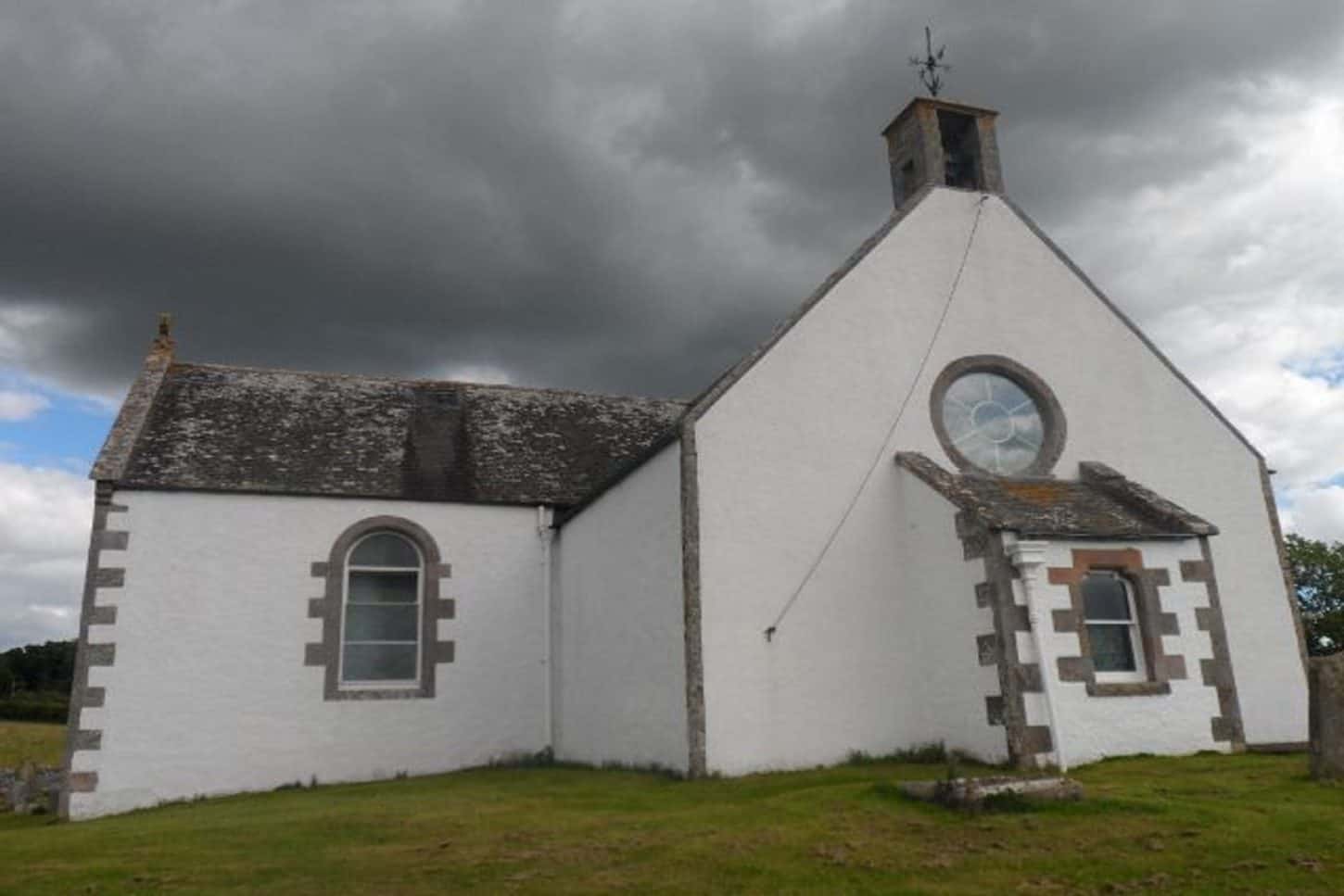
Some authors call Oxnam a plain church, but for me it’s an imposing building, casting a stark contrast to the dark skies that often appear when exploring. The site floods my mind with potential body snatching raids, and images of rank, unwashed individuals lurking behind the kirkyard wall are hard to erase.
Plain it might be, but the origins of the Kirk can be traced back to 1153 when the Percy family, later the Dukes of Northumberland with their seat at Alnwick, gifted the site and adjacent lands to Jedburgh Abbey. The present church, the one you stand in front of now, dates from 1738.
Oxnam is where my obsession with body snatching really kicked in. This is where I saw my first watch house and although it seems to get smaller every time I visit, on that first visit, eight years later, the site still sends tingles down my spine.
How To Get There
Lying just off the A68 as you head into Jedburgh, on a minor road off Oxnam Road, Oxnam Kirk is pretty easy to find. Just follow the road around keeping your eyes peeled for a small sign of your right directing you over a little bridge after about 3 miles of driving.
Keep a lookout along the top of the hills as you’re driving here, you should be able to make out the whitewashed church on the horizon.
Parking is at the back of the church, which means you don’t have to rush around this site to get it covered before someone scratches your car dumped on a well-used roadside.
Pause for a moment and take in the sweeping views as you push open the heavy iron gate to the kirkyard, imagining body snatchers sneaking out of Jedburgh, up through the woods and fields to the cadavers resting within.
To your right lies the watch house at the end of the graveyard. Tucked tight up against the far right hand side corner of the site. Back in the day it would have had a clear view across these fields, the gravestones in front not yet erected.
The Watch House At Oxnam

If you don’t know what you’re looking at, you’d be forgiven for thinking that the stone building in the top right-hand corner of the graveyard is an overzealous design of a garden shed.
Although it may be used as such today, back when resurrection men were plying their trade, and when demand for cadavers for Britain’s dissecting tables was reaching its second peak in the 1820s, watch houses similar to the one here at Oxnam were springing up in a surprising number of parishes.
The watch here had quite comfortable accommodation compared to some of the other watch houses I visit on my travel.
A fireplace stands on the right-hand side of the interior wall and there’s enough space to keep a nightly watch comfortable for the seven nights that they would have held vigil over the recently buried.
The window, unfortunately now blocked up, was once quite a size and I wouldn’t have been surprised if the body snatchers saw the watch before they saw the bodysnatchers.
I imagine it to have been glazed and to be similar to the one in the watch house at Cromdale in the Highlands.
I was lucky enough on a recent trip to find the watch house open and couldn’t resist a peek inside despite the thick dusty cobwebs caked to the doorframe!
Spiders for me fall into the same camp as ghosts I’m afraid!
I’ll be honest and say that my first look inside this watch house wasn’t the earth-shattering experience that I was hoping for. They rarely are to be honest as so many now are used as tool sheds.
But before you turn in haste and close the door on this watch house, stop for a moment and imagine two or three men sitting around a table – atop is a bottle of whisky maybe, a single candle. The fire going and the conversation turning to more macabre tales, adding fuel to the probably already overactive imaginations of the watch.
Would they have been discussing tactics and splitting up the roles of each of them just in case the body snatchers decided to pay Oxnam a visit?
I think they probably would have, after all, they were potentially about to come face to face with men from the criminal underworld, not to mention a naked cadaver roughly extracted from the grave and dropped onto the grass as they made their escape.
Not a pleasant thought….now you can close the door.
Memento Mori At Oxnam Kirk
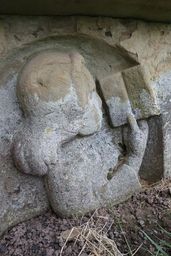
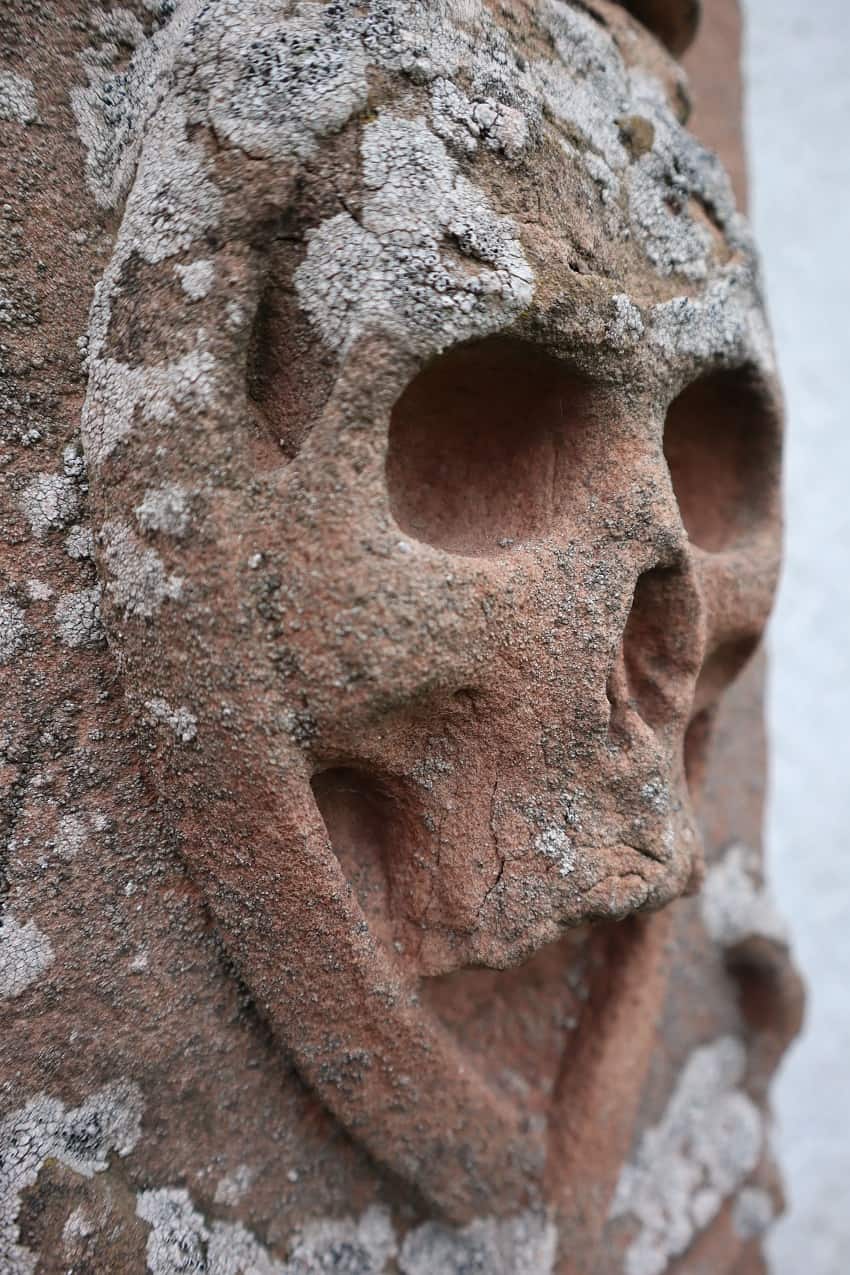
Cast your eye over the graveyard and everywhere you look is lichen; the gravestones here crying out to be left alone from the scrubbing brush that has caused countless damage elsewhere.
It’s easy to get side tracked at Oxnam, wandering hither and thither as you spot a skull out of the corner of your eye, but I’d hate for you to miss some of the treasures here.
Punishment Jougs At Oxnam
Hanging on the outside of the Kirk wall, near to the vestry door hangs a set of punishment jougs.
Punishment jougs consisted of an iron collar attached by a chain often to the church wall. This collar was then padlocked around an individual’s neck as punishment for both ecclesiastical and civil offences – drunkenness, blasphemy or failure to attend church for example. Dating from the 17 and 18 century, jougs were worn, as a general rule, from between one to four hours and were designed to bring shame on those wearing them.
With few examples still remaining, the punishment jougs at Oxnam still have their padlock attached, albeit in an incredibly rusty state.
Although the chain lengths did vary, wearing a set of jougs, for however long, would have been uncomfortable by itself, but imagine if you were short or the blacksmith had skimped on the chain links and you had to stand on raised feet just to stop the collar from cutting into your skin. Ouch.
A further set of punishment jougs can be seen at Eckford further along on your route.
Ancrum Old Parish Kirk
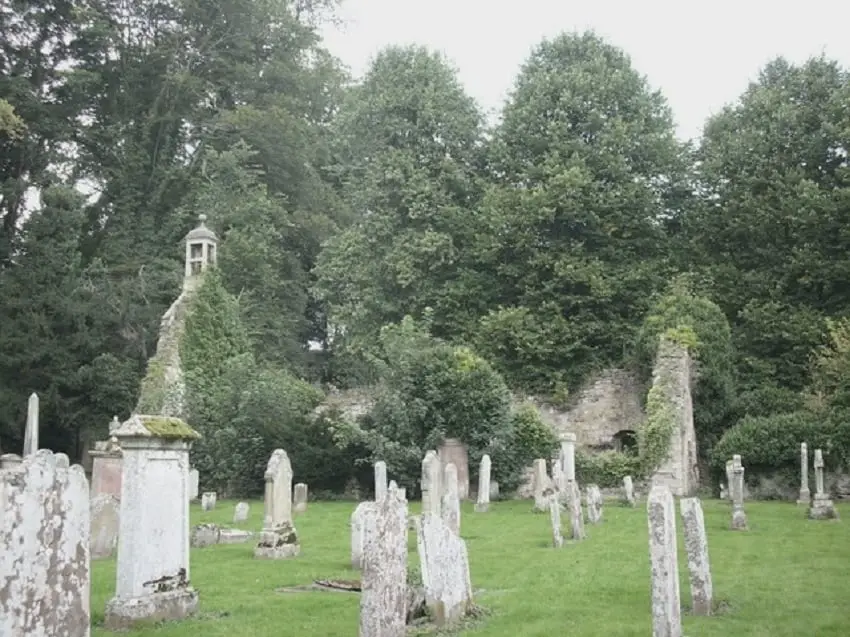
In 1825, the parishioners of Ancrum were confronted with a decomposing corpse at the site of a quarry.
Nobody knew who it was, but they all knew how it got there.
The corpse had already been prepared for packing and shipping and showed the classic signs of having been in the hands of the resurrection men.
Tied up tight to make as small a package as possible, the woman’s arms were corded against her body, her hands found placed upon each shoulder.
It was common for cadavers to be folded, or rather squashed into threes, the torso determining the final size of the bundle. The lady who was found partially covered near the quarry that day in 1825 also had her legs bent backwards at her knees, tied tight against her thighs.
After being taken to the church at Ancrum, the woman’s corpse was removed from its sack, and eventually identified as being the daughter of a man from the nearby village of Bedrule.
It is said that the body snatchers in question were serving time at Jedburgh Jail and were unable to collect their corpse, but you have to question, for a cadaver to be as prepared as this one was for transportation, what was it doing in the quarry in the first place, miles away from the nearest coach office.
Could it have been enroute already, discarded by a nervous passenger?
How To Find Anrum Old Kirk
The Old Kirk lies at the bottom of a steep bank (parking available) off the B6400 as you drive out of Ancrum and past the housing estates on your left. Follow the road to the end and you’ll find plenty of parking at the bottom.
Once here, you’ll find the ruined shell of the parish church, ivy romping away over the stones. The graveyard is a picturesque one, although very damp underfoot if your visit, like mine, results in the heavens opening as soon as you step out of the car.
Eckford Parish Kirk
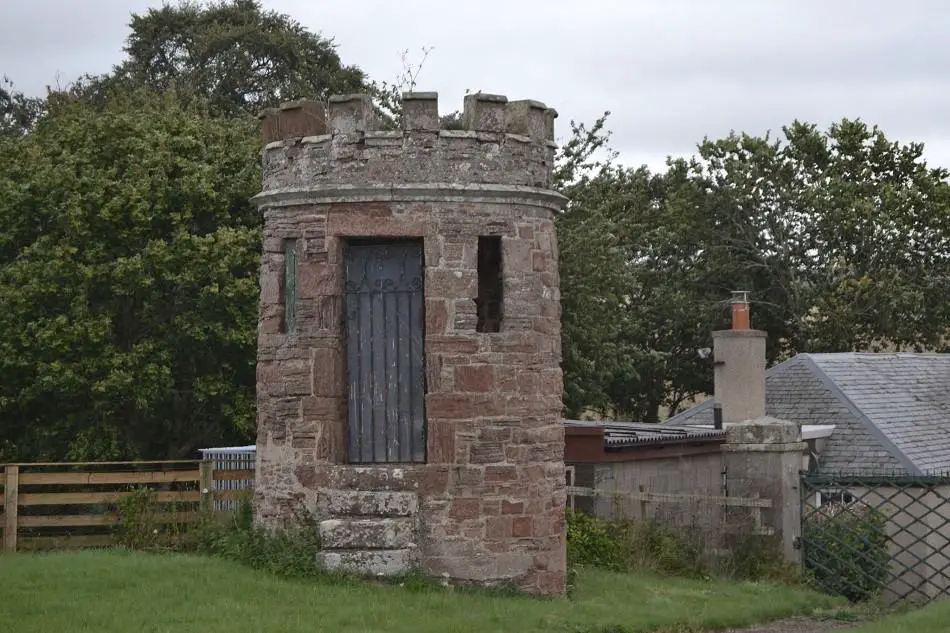
If you’ve not heard of Eckford before, then you’ve not heard the story of ‘Dandy Jim’, the courageous individual who swapped places with a corpse while the body snatchers were trying to catch up with their horse galloping across the fields.
The year was 1829 and James Goodfellow, better known as Dandy Jim, was returning home after visiting his sweetheart, his route taking him past the kirkyard at Eckford.
After noticing a horse and cart tied to a nearby tree, the young buck put two and two together and quickly formulated a plan.
Sending the body snatchers only means of transport galloping across the nearby fields, he quickly swapped places with the corpse in the back of the cart, all wrapped up in a cloth waiting to be packaged and sent tothe nearest medical school.
Returning with their trusty steed, the horse was quickly harnessed to the cart and the body snatchers headed off in the direction of Kelso.
Halfway along the road to Maxwellhaugh, on the modern day A698, one of the body snatchers suspected that the corpse they’d just lifted was still warm.
‘Warm you Say’ cried Dandy Jim as he threw back his covers.
Legend has it that because of Dandy Jim’s courageous moves that day, the parishioners rallied round and raised enough money to build the small watch tower that you see standing in the kirkyard today.
The story of ‘Dandy Jim’ has a slight ring to a story given by ‘Old Cunny’, a man known as the ‘King of The Ohio body snatchers’. Coincidence or was swapping places with a corpse just one of those things you did?
Finding Eckford Parish Kirk
Eckford is incredibly easy to find and can be found on the left hand side of the busy A68 as you head out of Jedburgh. You’ll pass a sign showing Eckford to your right, just after Crailing , ignore this and carry straight on.
Eckford Kirk comes up fast so keep your eyes peeled. There is a small parking bay at the side of the Kirk, but please don’t obstruct the gate to the field as this is in constant use.
You’ll know you’re in the right spot as you’ll see the watchtower just in front of you.
Hobkirk (Bonchester Bridge)
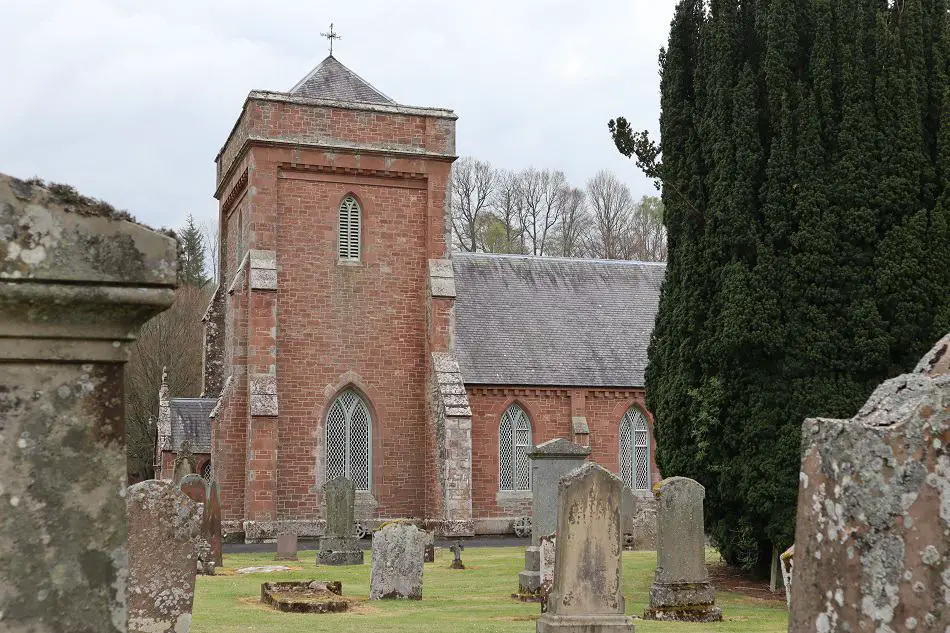
It is at the unassuming location of Hobkirk that a dark body snatching tale plays out.
The parish church at Hobkirk was not altogether a happy place. There was certainly no love lost between it and the parishioners who preferred to be worshipping at the nearby Southdean Kirk instead.
But when factors outside their control forced them back to their own Kirk at Hobkirk, they reluctantly, nay begrudgingly, were forced to make repairs to their own Kirk so that they still had somewhere suitable to worship.
In this rather far fetched tale involving the Reverend at the time, Revd. Nicol Edgar, we see the Kirkyard being haunted by an apparition in the form of a tall man wearing a blue bonnet.
Ghosts In The Graveyard At Hobkirk Kirk
Not content with haunting the graveyard, watching graves being dug, this apparition had even taken to sitting in the pews during service, which quite naturally was petrifying the worshipers of Hobkirk.
Taking matters into his own hands, the Revd. entered the Kirk one evening at midnight armed with a hefty Bible and a sword and proceeded to sit himself in front of the pulpit scratching a protective circle in the ground around himself.
Eventually, movement was heard in the corner of the Kirk and a mole was seen to appear from out of the ground.
This mole, growing larger transformed into the apparition that had been terrorising the parishioners, dressed from head to toe in blue.
This vision in blue, a cattle dealer who had been murdered on his way back from Lammas Fair, wanted his murder to be brought to justice and all he asked for was a quiet corner in the kirkyard to lay his head till the hand of justice caught up with him.
Revd. Edgar granted him this wish and he was never to be seen again wandering amongst the gravestones. However, this isn’t the end of the tale, for the links with body snatching don’t start until the Revd’s own death some four years later.
Body Snatching At Hobkirk: The Theft Of Revd. Nicol Edgar
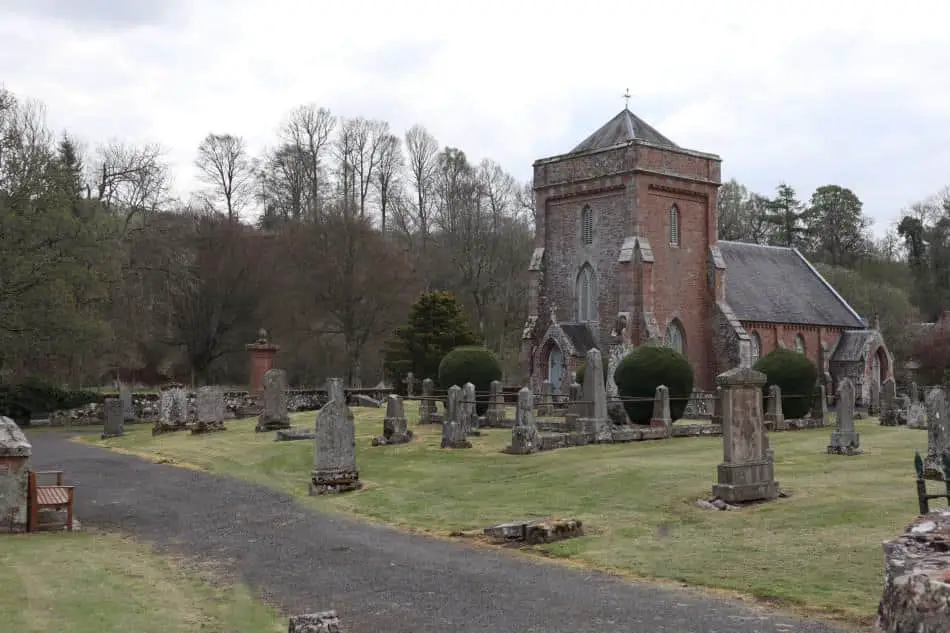
You’d think the parishioners of Hobkirk would have been grateful that their Revd. has ridden them of the ghostly apparition that was stopping them from attending church on a Sunday.
Quite the opposite. They became incredibly wary, some even believing that he himself was a warlock and that he too would soon be prowling around the graveyard.
In an attempt to stop these perceived hauntings, it was decided to steal the Revd’s corpse and rebury it in the scrubland on Bonchester Hill.
But as the thieves, for they weren’t body snatchers in the true sense of the word, made their way up the hill to their chosen location, one of the Revd’s arms came loose from its bindings and slapped one of them across the face.
As you would, the Revd’s corpse was immediately dropped and the would-be body snatchers fled the scene, not giving a second thought to the corpse that they’d left exposed on the hillside.
Many hours passed by before a second band of body snatchers made their way up the hillside to rescue the abandoned corpse, returning him to the grave from whence he came, the gravestone marking what was to be his final resting place.
Here lys Nicol Edgar, son of the Laird of Wedderlie, who died upon the 31 May, 1724, aged 67 years. And his spouse Susanna, who died 30th June 1713, aged 52
North & South of the Tweed: Stories and Legends of the Borders: Jean Lang (1913)
I didn’t see the Revd’s gravestone when I visited, but I’ll be honest, I wasn’t really looking. I was distracted by the few bits of memento mori that are dotted through the site and writing up my notes. If you do visit, I’d love to see if you can find Revd. Edgar’s grave.
Finding Hobkirk Kirk
Speed your way up through Northumberland and over into Scotland on the A68 and you’ll be met with some of the most fantastic landscapes throughout the whole trip.
Just over the border, on the A6088 to Hawick pull up in one of the many roadside opportunities and stop for a while to admire the view.
Much less crowded here than at the official viewpoint on the Border, plus you may be lucky enough to hear a woodpecker like I did while grabbing a welcome coffee I’d packed especially for the journey.
Here you’ll pass a signpost for another body snatching location, Canonbie, which if you have time you may wish to add as a small detour. It’s about 28 miles away.
Eyes peeled to the left for the B6357 and travel down into Bonchester Bridge. Here you’ll find a sign for Hobkirk. There’s parking outside the Kirk.
I still encourage you to visit even though this site doesn’t excite the senses as Oxnam will – grab a seat on one of the benches in the Kirkyard and perhaps see if the legend of the murdered cattle farmer is true…
Enjoy This Post? Why Not Pin It For later?
